One of the best things about chickens is their versatility. They can provide us with both eggs and meat, and to that end there are many breeds that have been selectively developed to those ends. Today we have chickens that lay crazy amounts of eggs, and also huge birds that can provide us with loads of meat.
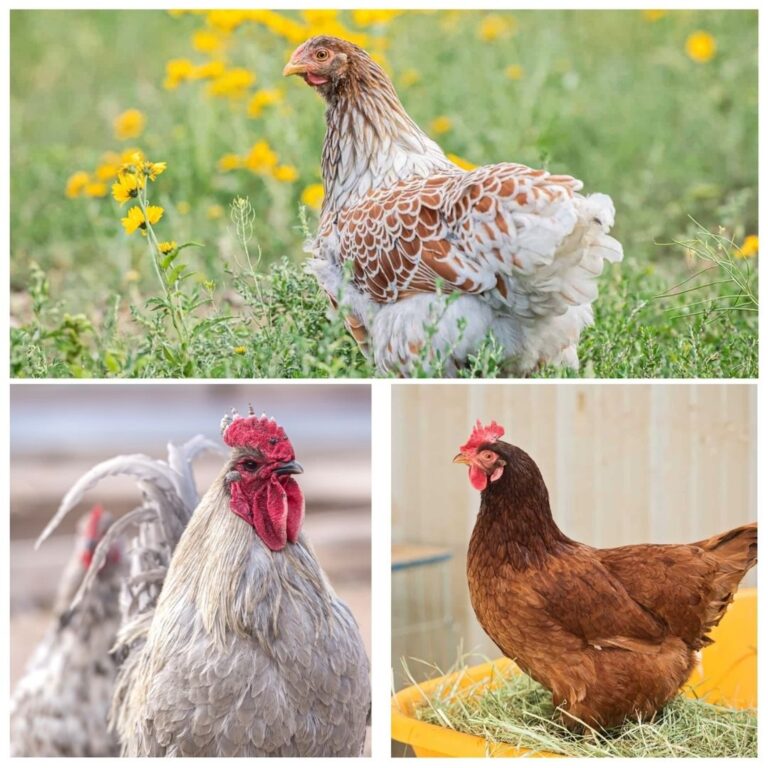
But we also have chickens that can do both, even if they aren’t as good as more specialized breeds.
These birds are often referred to as dual-purpose breeds, because they can give us both eggs and meat and typically in sufficient quantities to make them worth our while.
These chickens are a great way to diversify a more specialized flock or just simplify logistics around the run. Let me tell you about 12 dual-purpose chicken breeds that you need to know about.
What Are Dual-Purpose Chickens, Exactly?
To clarify, dual-purpose chicken breeds are exactly what you’re probably thinking: they can supply both meat and eggs. However, they’re often chosen to do one or the other but not both.
Yes, you might want to get eggs from a hen that is bound for slaughter in just a couple of months, but you aren’t going to get very many from her. Conversely, you can slaughter a hen that’s at the end of her useful laying life, but the meat is going to be pretty lackluster per her age.
The better approach, and the typical use for dual-purpose chickens, is to dedicate some of them to egg production while slaughtering others for meat as soon as it is ideal to do so. This ensures maximal quality and yield for both endeavors.
But to that end, you can depend on any of the following breeds to give you plenty of eggs and also an ample carcass yield.
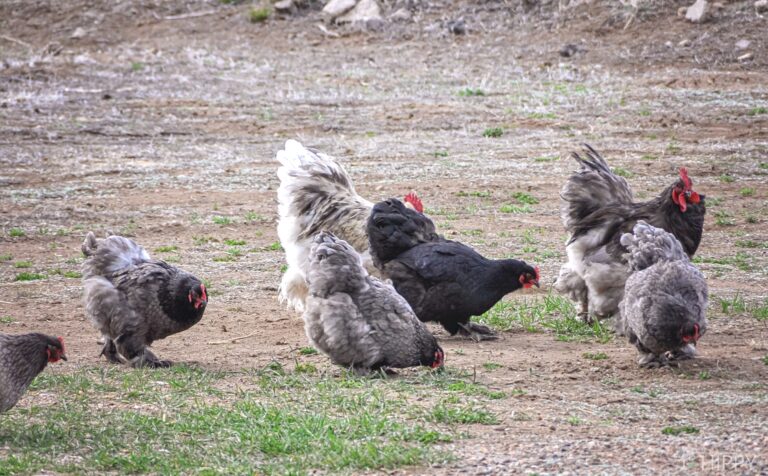
Cochin
Chunky, fluffy, and large all describe the Cochin. Famous for sweet personalities and extreme docility, they make a truly excellent pet breed and are one of the best you can get if you have small children who might not be ready to interact with other more assertive chickens just yet.
These stocky chickens can provide you with plenty of meat since roosters usually weigh around 11 pounds or a little bit more, and hens are right behind them at between 8 ½ and 9 pounds.
They are only so-so layers of eggs though, but a good hen that’s in her prime can still give you up to 150 medium eggs every year, though this number tends to drop after her third year of age.
Note that Cochins tend to get bullied in mixed flocks because of their docility, so keep an eye on your troublemaker birds if you are introducing them.
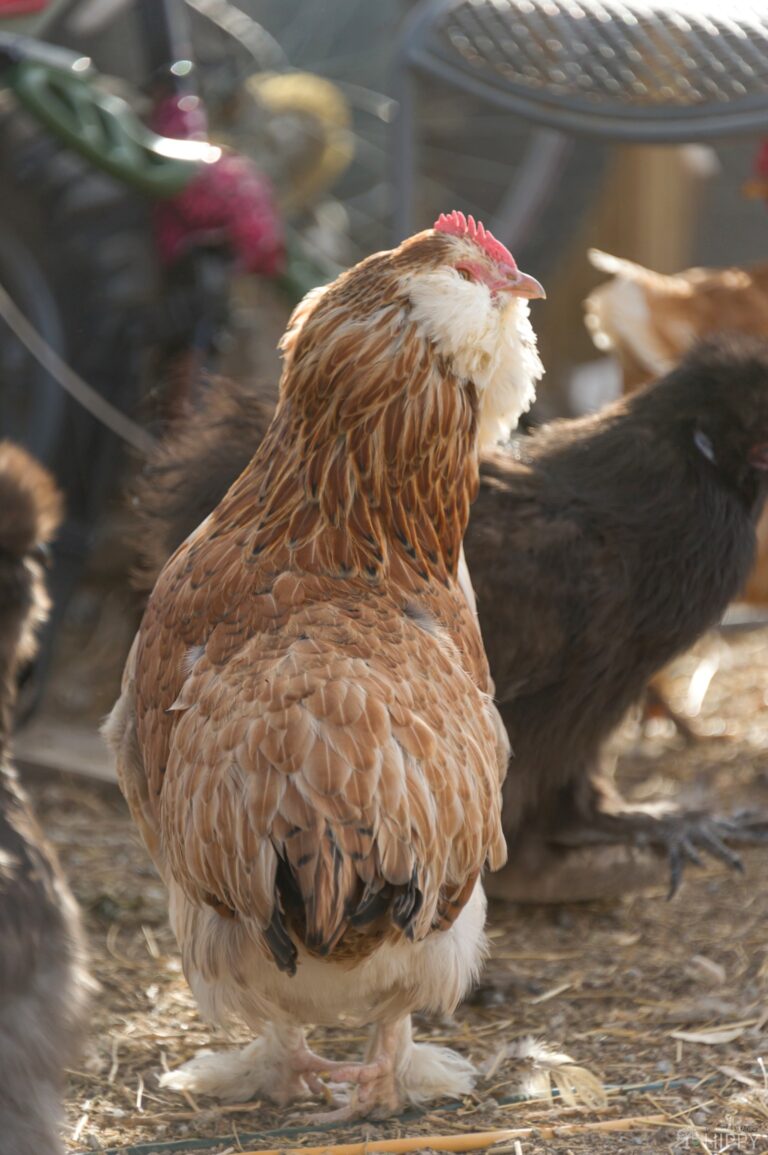
Faverolles
A famous French utility chicken that was originally developed to replace the Houdan since that breed did so poorly in captivity, the Faverolle is truly unique. These chickens are known for extreme friendliness, docility, and curiosity, and as alluded to, they do just fine even in very close confinement.
They energetically run around all over the place seemingly in quest of something that is known only to them and they are just as likely to show you plenty of affection before running off again.
This alone makes them the darlings of backyard chicken keepers and fanciers, but Faverolles are truly capable layers, producing around 225 to 250 medium to large size eggs yearly.
Though not as big as other chickens on our list, they are still sizable, with roosters weighing around 8 pounds and hens maxing out at 6 ½ pounds, meaning a good yield of tender, lean, and succulent meat.
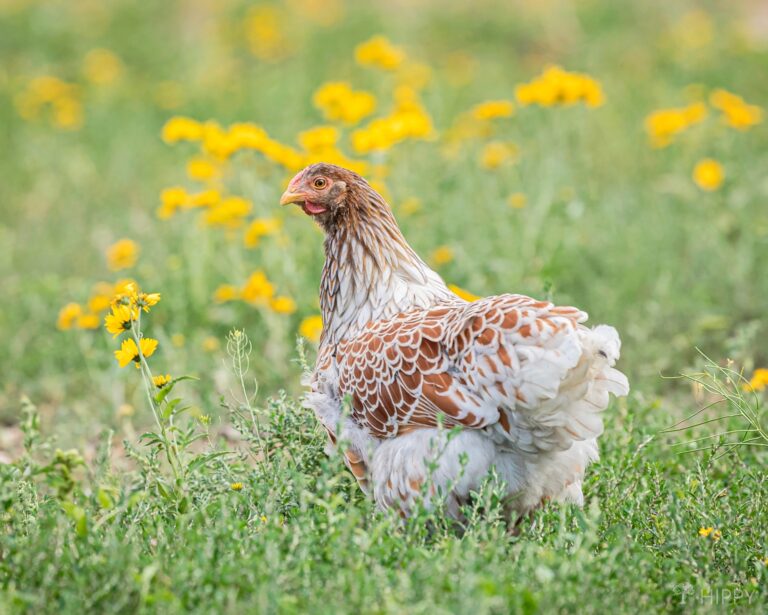
Wyandotte
A true all-purpose chicken, and a very old American domestic breed, the Wyandotte is extremely cold hardy, calm, dignified, and very easy to handle.
They also do great in free-ranging situations and are pleasant if not overtly friendly; much of the time, they prefer to keep a little bit of distance between themselves and people, but don’t hold that against them.
Wyandottes are big-bodied birds, with roosters weighing nearly 10 pounds and hens averaging anywhere from 6 to 7 ½ pounds.
They are modest egg layers, with young birds in their prime producing around 200 eggs per year but these eggs are quite large meaning the yield can equal that of smaller breeds that weigh a little bit less.
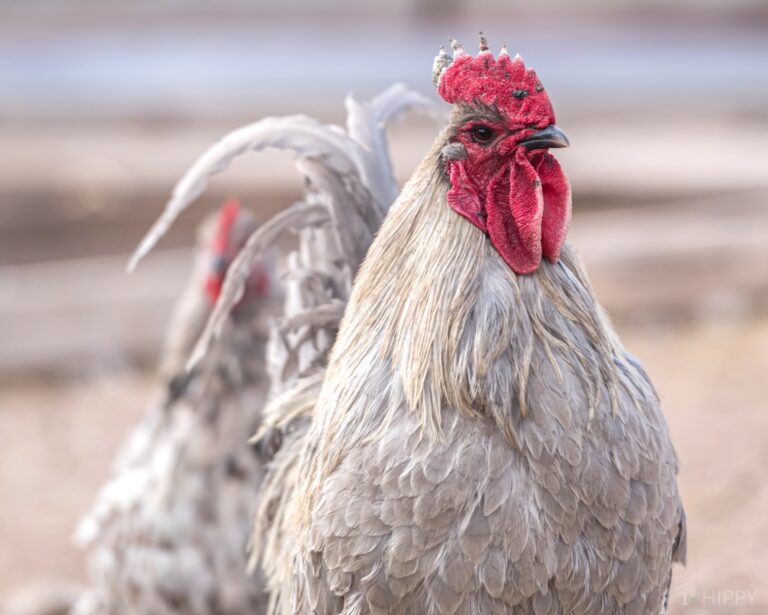
Orpington
One of the most famous and rightly adored domestic chickens in all the world, Orpingtons are well known for their friendliness, docility and size. They’re also known for their extreme broodiness, which must be managed if you want to keep them producing eggs at the maximum rate!
These chunky birds usually tip the scales at about 10 pounds or a bit more in the case of males, and up to 8 pounds in the case of the ladies. If you can prevent a mother Orpington from sitting on a clutch of eggs, she can give you anywhere from 150 to 250 large eggs every year.
As expected, these plump birds can also provide a wonderful bounty of meat and they make a fine roaster.
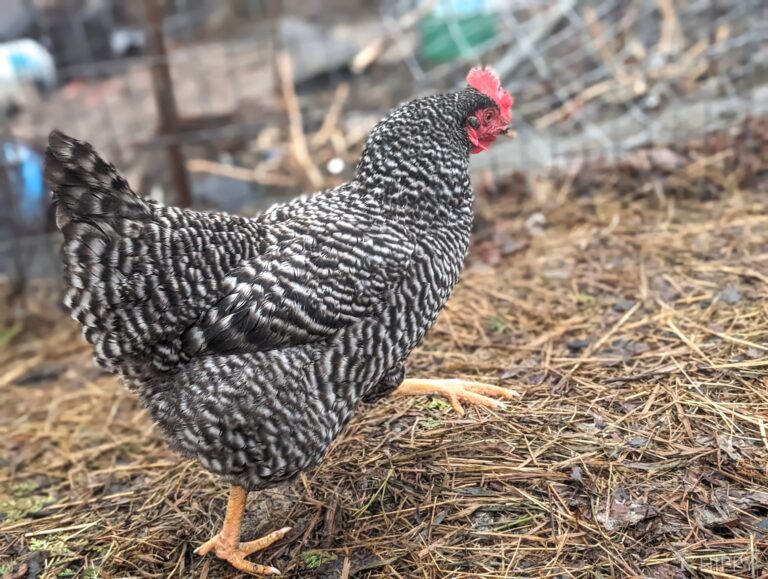
Plymouth Rock
Plymouth Rocks are yet another darling breed that hails from the United States, and have always been raised both for meat and eggs.
Although they’re one of the smaller birds on our list, with roosters rarely clearing 7 pounds and hens averaging about 5 pounds or slightly more, their meat is known to be of good quality.
Egg production is somewhat variable, averaging around 200 a year, but Plymouth Rocks do start laying pretty early on, at around 4 months old.
These birds are quiet, friendly, and easy to handle making them a wonderful choice for a beginning keeper, but they have a tendency to go broody which can definitely interrupt your supply of eggs so have a plan for managing that occurrence.
Dominique
Dominiques are medium-bodied chickens that are known for long lifespans, beautiful plumage patterns and colors and being highly affectionate with people.
If you like picking up your chickens and carrying them around or cuddling them, Dominiques should be at the top of a very short list!
They are also uniformly excellent grazers, and if you have plenty of bugs, buds, plants and other interesting tidbits on your property they can provide much of their own nutrition if you let them free-range.
Dominiques were a mainstay of the commercial meat market a long time ago, but that use has since passed. Luckily, they’re still fine for our purposes and are also decent egg layers, producing anywhere from 150 to 200 medium-sized eggs yearly.
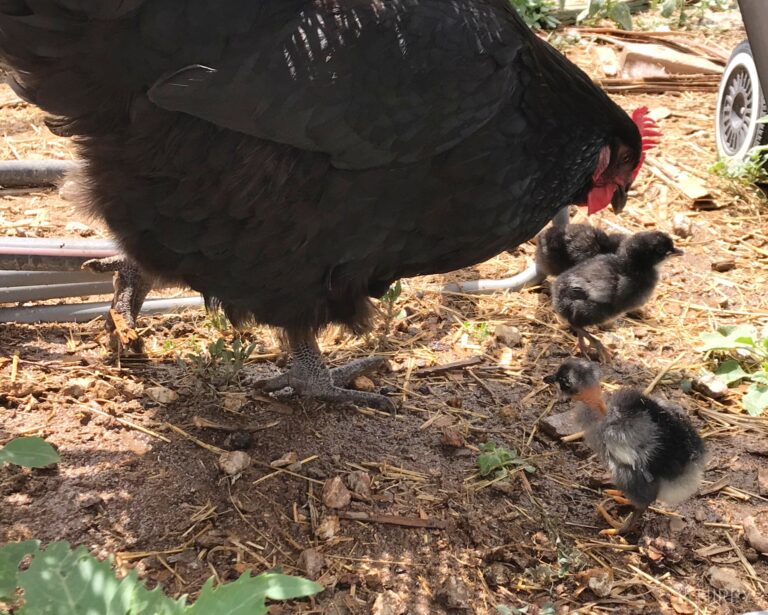
Black Australorp
The Black Australorp has an excellent and well-deserved reputation as one of the modern-day “superlayers,” with most females laying no less than 250 eggs yearly, and many exceptional lineages producing more than 300 eggs a year! That’s remarkable!
But besides eggs, these hefty chickens, weighing up to 10 pounds in the case of roosters, provide plenty of high quality, savory meat, and they make a pretty good table bird.
Black Australorps are also hardy, adaptable, and tend to be very long lived meaning that you’ll get eggs for quite a while and the comfort of knowing that your chickens will be with you for a long time if you take good care of them.
Jersey Giant
The Jersey Giant is a beefy bird that lives up to its name. These gargantuan chooks can weigh up to an astonishing 13 pounds, sometimes 15 pounds or even a tad more, and stand nearly 3 feet tall in the case of exceptional roosters.
Obviously, they produce a truly tremendous yield of meat, each and every bird, once they fully mature. They also lay dense, jumbo eggs, though most hens will only lay between 2 and 3 a week. Offsetting this, they are known to lay straight through the wintertime.
One downside with Jersey Giants is that they require a lot of food in accordance with their great size, and they take much longer to mature physically compared to other domestic breeds. If you want to maximize the yield of meat, they’ll be over a year old before you harvest them.
Langshan
Langshans are another stocky breed, one originally developed for dual-purpose production. With roosters weighing nearly 10 pounds, and hens still coming in at a very respectable 7 ½ pounds, this is a hardy, cold-resistant breed known to lay even when it is cold and dark, producing anywhere from 150 to 200 eggs yearly, or perhaps a little more.
Langshans are noteworthy for being tolerant of people, generally calm and thriving in larger flock sizes. There are also excellent hunters and foragers, making them one of the best breeds around if you have a larger property and want to let your birds free range. Trust me, a sizeable flock of Langshans will eradicate bugs and strip plants clean!
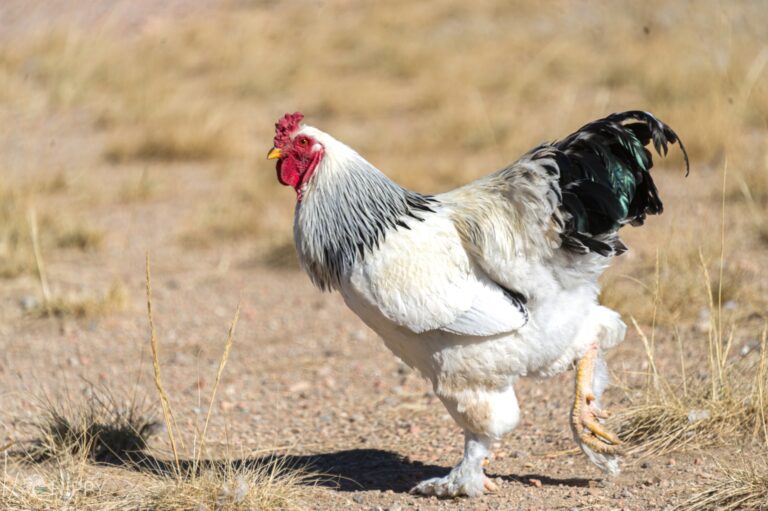
Brahma
Another “monster” chicken on our list, don’t let the height and girth of the Brahma fool you; these feather-legged birds really are sweethearts and have an easy-going, agreeable nature in mixed flocks and toward people alike. They are relatively slow layers, but you can depend on good hens to give you about 150 very large brown eggs yearly.
When it comes to meat, you’ll get plenty of that too, as Brahmas provide rich, tender cuts that are increasingly loved by connoisseurs. Roosters weigh anywhere from 10 to 11 pounds, sometimes a bit more, and hens are also quite chunky themselves at about 8 ½ pounds at most. Lots to love, and just as importantly lots to go around!
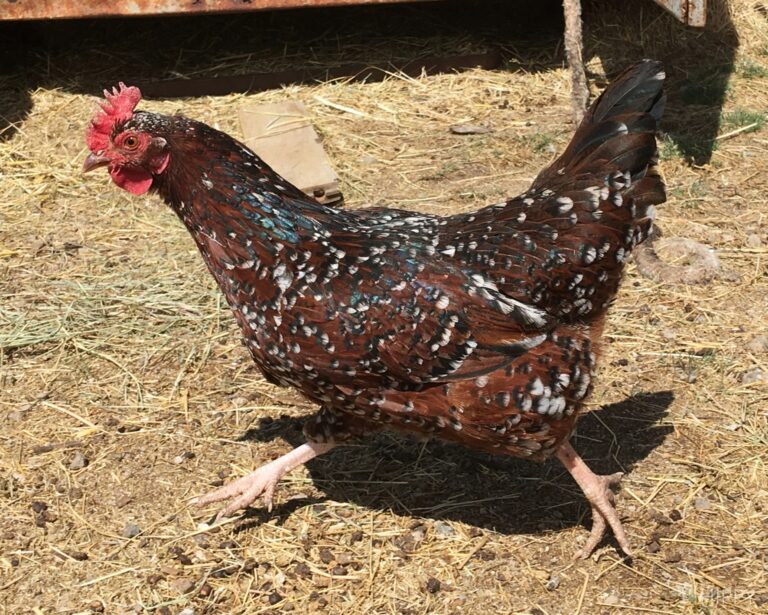
Speckled Sussex
One of the most beloved heritage breeds, the Sussex has been around for centuries, and the Speckled Sussex is arguably the most iconic of all. They are sweet-natured, calm, and not prone to getting anxious or flighty.
Considering that they are also notably quiet, they’re a wonderful pet or backyard chicken. Hens are also notable for laying straight through the winter, and considering that they crank out anywhere from four to five medium-sized eggs a week you can expect anywhere from 200 to 250 a year.
Hens tip the scales at around 7 pounds, and roosters at around 9 pounds, meaning they are sizable enough to provide a good yield of meat.
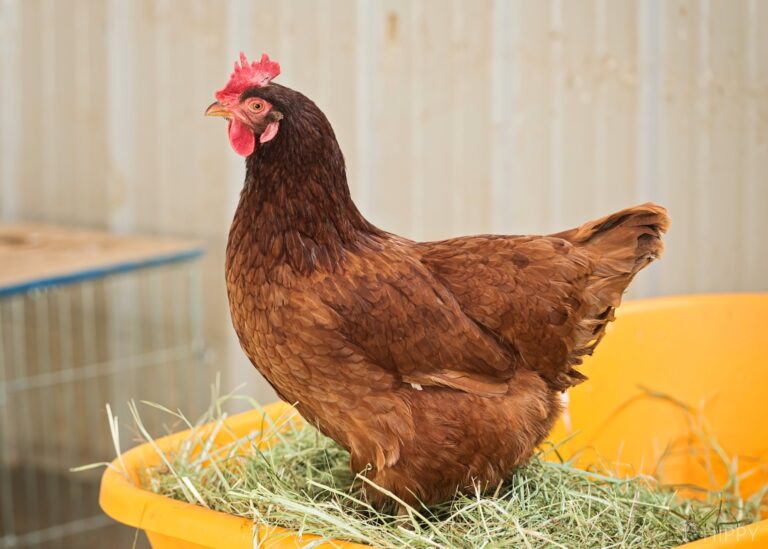
Rhode Island Red
One of the most beloved American heritage breeds, and also one of the most temperamental, Rhode Island Reds have a reputation for standoffishness and, sometimes, belligerence though they are just as likely to be friendly with people as long as they are raised right.
Rhode Island Reds tend to be curious, independent, and hardy, and show a marked tendency to resist diseases and parasites compared to other domestic birds.
Hens are excellent layers, and as long as temperatures don’t get too cold you can expect anywhere from 250 to 300 medium- or large-sized eggs yearly. Their meat is also noted to be fine-grained and lean, but not particularly remarkable otherwise. Roosters weigh about 8 ½ pounds, and hens are significantly lighter at about 6 ½ pounds.
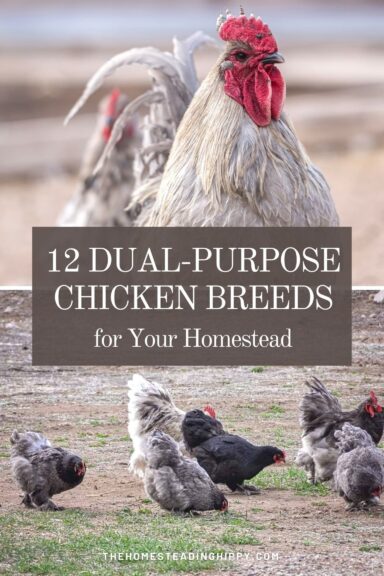
Tim is a farm boy with vast experience on homesteads, and with survival and prepping. He lives a self-reliant lifestyle along with his aging mother in a quiet and very conservative little town in Ohio. He teaches folks about security, prepping and self-sufficiency not just through his witty writing, but also in person.
Find out more about Tim and the rest of the crew here.
